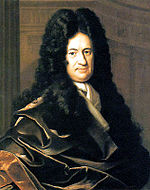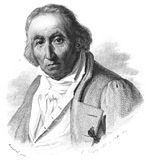| Information science |
|---|
| General aspects |
| Information architecture · Information retrieval |
| Related fields and sub-fields |
| Information technology · Informatics |
| Portal |

Information science is an interdisciplinary science primarily concerned with the analysis, collection, classification, manipulation, storage, retrieval and dissemination of information.[1] Practitioners within the field study the application and usage of knowledge in organizations, along with the interaction between people, organizations and any existing information systems, with the aim of creating, replacing, improving or understanding information systems. Information science is often (mistakenly) considered a branch of computer science. However, it is actually a broad, interdisciplinary field, incorporating not only aspects of computer science, but often diverse fields such as archival science, cognitive science, commerce, communications, law, library science, museology, management, mathematics, philosophy, public policy, and the social sciences. Amongst the various contributions to this relatively new field is the term infodynamics of which was initially coined as an interdisciplinary term “coined by psychologist and biochemist, Ray R. PorMansor; defined as the transfer, translation, transcription, transduction, storage, recall, and other processes of organized information. Infodynamics according to PorMansor is an inherent attribute of the second law of thermodynamics of which entropy increases with time.
Information science focuses on understanding problems from the perspective of the stakeholders involved and then applying information and other technologies as needed. In other words, it tackles systemic problems first rather than individual pieces of technology within that system. In this respect, information science can be seen as a response to technological determinism, the belief that technology "develops by its own laws, that it realizes its own potential, limited only by the material resources available, and must therefore be regarded as an autonomous system controlling and ultimately permeating all other subsystems of society." [2] Within information science, attention has been given in recent years to human–computer interaction, groupware, the semantic web, value sensitive design, iterative design processes and to the ways people generate, use and find information. Today this field is called the Field of Information, and there are a growing number of Schools and Colleges of Information.
Information science should not be confused with information theory, the study of a particular mathematical concept of information, or with library science, a field related to libraries which uses some of the principles of information science.
Contents[hide]
|
[edit] Definitions of information science
| Wikiversity has learning materials about Information science |
Information Science consists of having the knowledge and understanding on how to collect, classify, manipulate, store, retrieve and disseminate any type of information.
Some authors treat informatics as a synonym for information science, especially related to the concept developed by A. I. Mikhailov and other Soviet authors in the mid sixties, which suggested that informatics is a discipline related to the study of Scientific Information[3]. Because of the rapidly evolving, interdisciplinary nature of informatics, a precise meaning of the term "informatics" is presently difficult to pin down.
Regional differences and international terminology complicate the problem. Some people note that much of what is called "Informatics" today was once called "Information Science" at least in fields such as Medical Informatics. For example, when library scientists began also to use the phrase "Information Science" to refer to their work, the term informatics emerged:
- in the United States as a response by computer scientists to distinguish their work from that of library science, and
- in Britain as a term for a science of information that studies natural, as well as artificial or engineered, information-processing systems.
[edit] History
[edit] Early beginnings

Information science, in studying the collection, classification, manipulation, storage, retrieval and dissemination of information has origins in the common stock of human knowledge. Information analysis has been carried out by scholars at least as early as the time of the Abyssinian Empire with the emergence of cultural depositories, what is today known as libraries and archives.[4] Institutionally, information science emerged in the 19th Century along with many other social science disciplines. As a science, however, it finds its institutional roots in the history of science, beginning with publication of the first issues of Philosophical Transactions, generally considered the first scientific journal, in 1665 by the Royal Society (London).
The institutionalization of science occurred throughout the 18th Century. In 1731, Benjamin Franklin established the Library Company of Philadelphia, the first "public” library, which quickly expanded beyond the realm of books and became a center of scientific experiment, and which hosted public exhibitions of scientific experiments.[5] Academie de Chirurgia (Paris) published Memoires pour les Chirurgiens, generally considered to be the first medical journal, in 1736. The American Philosophical Society, patterned on the Royal Society (London), was founded in Philadelphia in 1743. As numerous other scientific journals and societies are founded, Alois Senefelder develops the concept of lithography for use in mass printing work in Germany in 1796.
[edit] 19th century

By the 19th Century the first signs of information science emerged as separate and distinct from other sciences and social sciences but in conjunction with communication and computation. In 1801, Joseph Marie Jacquard invented a punched card system to control operations of the cloth weaving loom in France. It was the first use of "memory storage of patterns" system.[6] As chemistry journals emerged throughout the 1820s and 1830s,[7] Charles Babbage developed his "difference engine," the first step towards the modern computer, in 1822 and his "analytical engine” by 1834. By 1843 Richard Hoe developed the rotary press, and in 1844 Samuel Morse sent the first public telegraph message. By 1848 William F. Poole begins the Index to Periodical Literature, the first general periodical literature index in the US.
In 1854 George Boole published An Investigation into Laws of Thought..., which lays the foundations for Boolean algebra, which is later used in information retrieval.[8] In 1860 a congress is held at Karlsruhe Technische Hochschule to discuss the feasibility of establishing a systematic and rational nomenclature for chemistry. The congress does not reach any conclusive results, but several key participants return home with Stanislao Cannizzaro's outline (1858), which ultimately convinces them of the validity of his scheme for calculating atomic weights.[9]
By 1865 the Smithsonian Institution began a catalog of current scientific papers, which became the International Catalogue of Scientific Papers in 1902.[10] The following year the Royal Society began publication of its Catalogue of Papers in London. In 1868, Christopher Sholes, Carlos Glidden, and S. W. Soule produced the first practical typewriter. By 1872 Lord Kelvin devised an analogue computer to predict the tides, and by 1875 Frank Stephen Baldwin was granted the first US patent for a practical calculating machine that performs four arithmetic functions.[7] Alexander Graham Bell and Thomas Edison invented the phonograph and telephone in 1876 and 1877 respectively, and the American Library Association was founded in Philadelphia. In 1879 Index Medicus was first issued by the Library of the Surgeon General, U.S. Army, with John Shaw Billings as librarian, and later the library issues Index Catalogue, which achieved an international reputation as the most complete catalog of medical literature.[11]
[edit] European documentation
The discipline of European Documentation, which marks the earliest theoretical foundations of modern information science, emerged in the late part of the 19th Century together with several more scientific indexes whose purpose was to organize scholarly literature. Most information science historians cite Paul Otlet and Henri La Fontaine as the fathers of information science with the founding of the International Institute of Bibliography (IIB) in 1895.[12] A second generation of European Documentalists emerged after the Second World War, most notably Suzanne Briet. However, "information science" as a term is not popularly used in academia until sometime in the latter part of the 20th Century.[13]
Documentalists emphasized the utilitarian integration of technology and technique toward specific social goals. According to Ronald Day, "As an organized system of techniques and technologies, documentation was understood as a player in the historical development of global organization in modernity – indeed, a major player inasmuch as that organization was dependent on the organization and transmission of information."[14] Otlet and Lafontaine (who won the Nobel Prize in 1913) not only envisioned later technical innovations but also projected a global vision for information and information technologies that speaks directly to postwar visions of a global "information society." Otlet and Lafontaine established numerous organizations dedicated to standardization, bibliography, international associations, and consequently, international cooperation. These organizations were fundamental for ensuring international production in commerce, information, communication and modern economic development, and they later found their global form in such institutions as the League of Nations and the United Nations. Otlet designed the Universal Decimal Classification, based on Melville Dewey’s decimal classification system.[15]
Although he lived decades before computers and networks emerged, what he discussed prefigured what ultimately became the World Wide Web. His vision of a great network of knowledge focused on documents and included the notions of hyperlinks, search engines, remote access, and social networks.
Otlet not only imagined that all the world's knowledge should be interlinked and made available remotely to anyone, but he also proceeded to build a structured document collection. This collection involved standardized paper sheets and cards filed in custom-designed cabinets according to a hierarchical index (which culled information worldwide from diverse sources) and a commercial information retrieval service (which answered written requests by copying relevant information from index cards). Users of this service were even warned if their query was likely to produce more than 50 results per search.[15] By 1937 documentation had formally been institutionalized, as evidenced by the founding of the American Documentation Institute (ADI), later called the American Society for Information Science and Technology.
[edit] Transition to modern information science

With the 1950s came increasing awareness of the potential of automatic devices for literature searching and information storage and retrieval. As these concepts grew in magnitude and potential, so did the variety of information science interests. By the 1960s and 70s, there was a move from batch processing to online modes, from mainframe to mini and microcomputers. Additionally, traditional boundaries among disciplines began to fade and many information science scholars joined with library programs. They further made themselves multidisciplinary by incorporating disciplines in the sciences, humanities and social sciences, as well as other professional programs, such as law and medicine in their curriculum. By the 1980s, large databases, such as Grateful Med at the National Library of Medicine, and user-oriented services such as Dialog and Compuserve, were for the first time accessible by individuals from their personal computers. The 1980s also saw the emergence of numerous special interest groups to respond to the changes. By the end of the decade, special interest groups were available involving non-print media, social sciences, energy and the environment, and community information systems. Today, information science largely examines technical bases, social consequences, and theoretical understanding of online databases, widespread use of databases in government, industry, and education, and the development of the Internet and World Wide Web.[16]
[edit] Important historical figures
|
|
[edit] Related disciplines
There are many fields which claims to be "sciences" or "disciplines" which are difficult to distinguish from each other and from information science. Some of them are:
- Archival science
- Communication studies
- Computer science
- Documentation (field)
- Informatics
- Information management
- Information systems research
- Internet studies
- Knowledge management
- Library science
- Media studies
- Scientometrics

No comments:
Post a Comment